In Search of Natural Silence
AUTHOR
Nikhil Nagaraj
Let’s travel back seventy thousand years. The plains and mountains of the Indian subcontinent are overflowing with life. Two species of prehistoric giants–roof-toothed elephants and giant straight tusked elephants–, hippopotamuses, zebra-like horses, aurochs, Asiatic cheetahs, Sunderban dwarf rhinoceroses and Northern Sumatran rhinoceroses, and Shivalik horses as tall as 2.5 meters roam the earth. Wildlife is everywhere. Humans have not made their presence felt in the region yet, but various kinds of birds abound, including crested serpent eagles, great hornbills, vultures, pink-headed ducks, Indian ostriches, common crows, peacocks, blood pheasants, swans, roosters, turkeys. They suffuse the air with flight and songs, while tree frogs, insects, and reptiles soak the soundscape with the intricate menagerie of their voices.
It is the beginning of the end for the last ice age and the subcontinent is experiencing intense monsoons with subhumid climates in areas otherwise completely arid. During the colder glacial periods, the inverse would have taken place, with less intense monsoons and lower amounts of precipitation. With the earth continuing to get warmer, the world of flora is also thriving. Pine, oak, bishop wood, Indian mahogany, myrtle, cluster fig trees. Ancient shola forests have advanced north along with low-lying shrubs and grasslands. The shola and grassland together form the shola-grassland complex or mosaic. There is a thick concentration of mosses upon the undergrowth and many ferns appear in the sunlit narrow transitions. The flora and fauna thrive in the cold winters and warm summers and their individual voices intermingle to yield an intense and collaborative symphony.
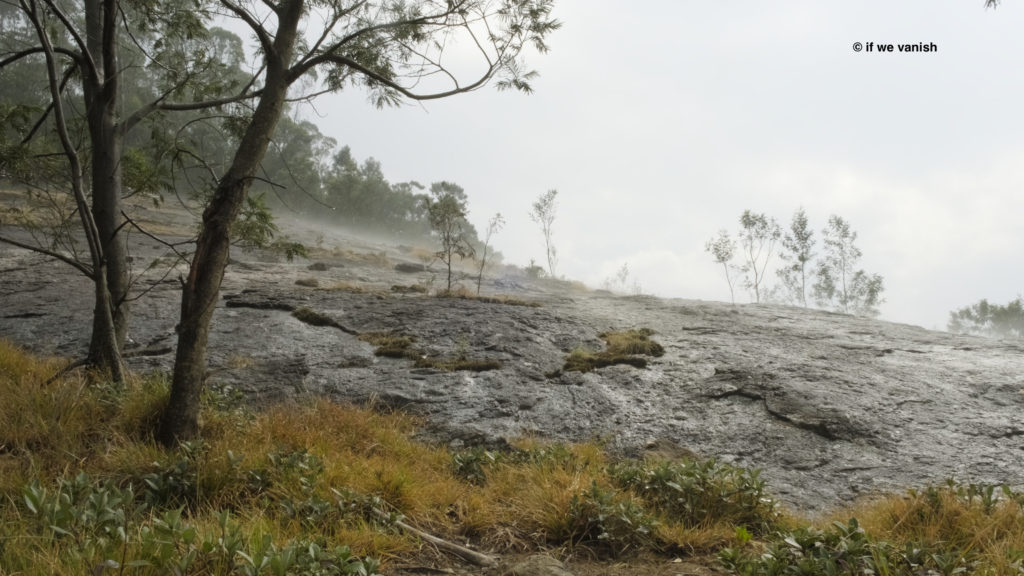
The habitats are densely populated with life, which in turn is at a numerical peak in our planet’s natural history. Thousands of species sing in choruses at all times of day and night. The visual spectacle would be impressive, but the soundscape is absolutely glorious. A complex sonic narrative crescendoes to the greatest volumes at dawn and dusk: this would now be familiar to listeners of many styles of modern music. Animals are growling, chirping, cooing, humming, clicking, howling, croaking, barking, and singing melodies such that each voice can still be distinctly heard and the creatures can distinguish one voice from another. The only sounds louder than these choruses are those of thunder, erupting volcanoes, or the howling winds borne by the monsoons. The sound of water from a nearby stream is the constant non-biological acoustic signature. Each creature is surrounded by waves of energy and vibrations that come from everywhere – above, around, and from below the ground as well. The dominant opportunists take advantage and pursue those that are less agile and more stunned. The predators propel themselves into the air and crash through the vegetation, following their prey. The final cries of conquest are heard, and a new message punctuates the moment. This is a revelation of the planet’s acoustic harmony as well as its deep expression of sound and rhythm. This is the baseline for what we hear today in the world’s remaining wild places. At one time, there was no other acoustic inspiration, and it is also likely that the origins of many pieces of music we enjoy today lie in these collective voices.
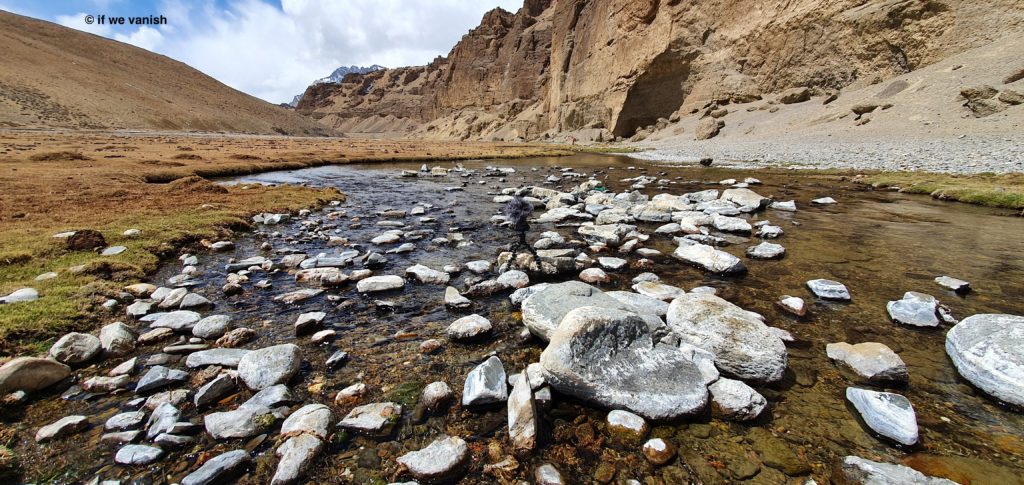
Late one evening, my colleague Felix Deufel and I, along with a local guide, were alone in the jungles of the Garo hills, several kilometers from our camp, with almost no light apart from the beams of our headlamps. Hoping to record the soundscapes at various locations, we walked the trail deeply aware of the sounds around us. Our guide picked up on the unmistakable scent of a tiger. We never saw the animal but heard low-frequency rumbles for a few minutes. We knew it was close, perhaps even just a few meters away. It was frequently marking its scent as it followed us for some distance. Our senses were heightened but we were not afraid, feeling that there wasn’t any immediate danger. We proceeded to record the sonic textures of the rainforest by day and night over several days. An exquisite concoction of raindrops on leaves, the sounds of insects, birds, frogs, and gibbons performing their concert as they have from the beginning. Just like a pair of binoculars, our microphones brought the sound within an intimate range, exposing details that were entirely new to us. Birds flew overhead through the stereo space with mixtures of different tonalities. With the portable recording systems, I did not feel like I was a distant observer anymore but, rather, as if I had been sucked into a new space while becoming an integral part of the experience itself. Many of us don’t distinguish between the act of listening and hearing. We as humans are fully accustomed to hearing sounds passively, but it is quite another thing to be able to listen with an open spirit while being fully and actively engaged.
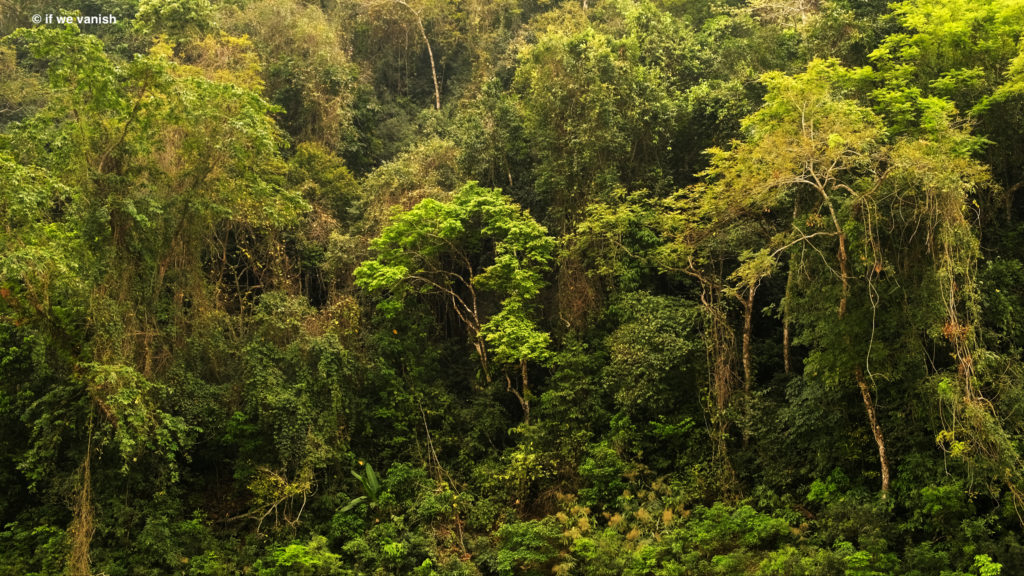
The sounds of geophony (natural sounds from non-biological sources such as wind, water, movements of the earth, and rain) were the first sounds on Earth. This element of the soundscape is the context in which animals’ voices and certain aspects of human culture have evolved. Every acoustically sensitive organism had to accommodate this–each had to establish a bandwidth in which they could click, hiss, roar, sing, or call, a bandwidth which could stand out in relation to the geophony. This is a source of beauty and complexity in itself and deserves to be explored on its own terms. It’s likely that water would have been the first natural sound any organism could interact with. What we do know for sure is that organisms have always depended on water to support life. In other words, water was life’s first home. The sound produced by the medium would have been the first any evolving organism would have heard.
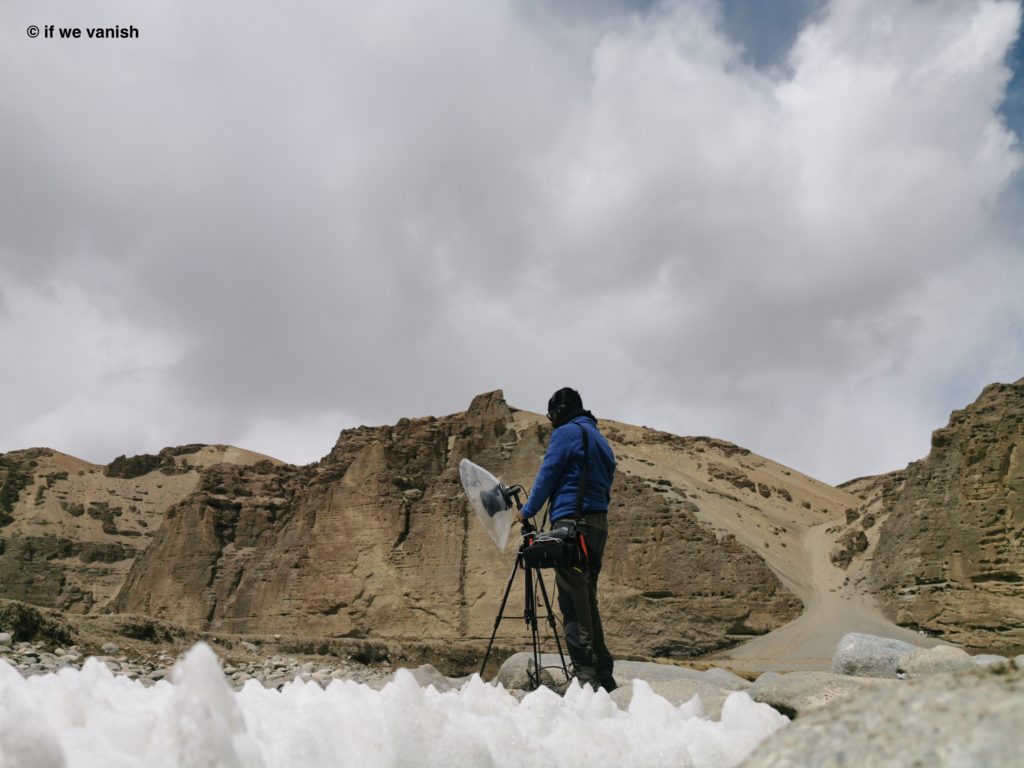
We were putting up at a researchers’ camp in the Western Ghats. It was just after dawn when we set out from there, along with our Adivasi guides. The camp was situated hundreds of meters above the Bhavani River, where the endangered lion-tailed macaques and other primates in the area spend most of their lives. These macaques are sunrise singers. Their vocalisations are so beautiful that ancient Kurumba tribes have myths that speak of the sun rising in reply to their calls. In the remaining viable rainforest habitats of the Western Ghats, every chorus at dawn and dusk is filled with the near-field and distant echoes of these sounds. The macaques connect with each other through elaborately developed vocal exchanges that are unique to each couple. I was reminded of many melodically arranged folk duets I had heard over the years. We can look at music as an acoustic mirror – it reflects our culture and surroundings at any point in time. Humans may have been making music even before they were using language. We can look at the context in which we evolved for clues about the origins of music.
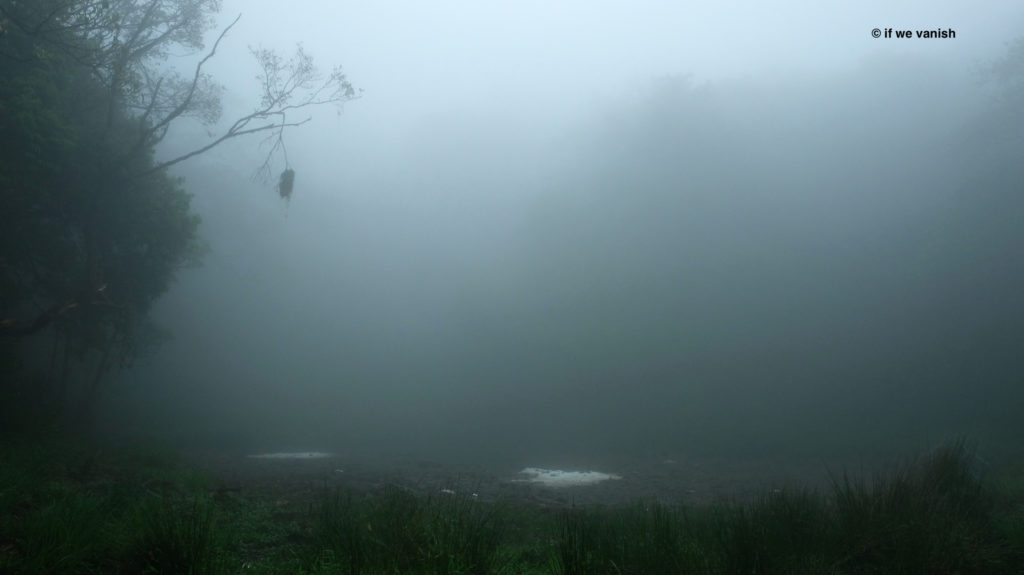
In March 2022, the team of if we vanish, directed by sound artists Felix Deufel and myself, headed into some of the last pristine habitats of India to capture the sonic heritage of these ancient biodiverse areas before they are irreversibly damaged by human interference and climate change. From the Western Ghats to the cold deserts of the Himalayas, we went hiking in mountain forests, climbed high altitudes of over 4500m, and recorded about 434 hours of soundscapes in different 3D audio formats. The soundscape of a place, often overlooked in conservation approaches, is an underrated measure of the biodiversity it houses. The conservation of soundscapes and sonic patterns from these regions can be used by ecologists and scientists to study the health of these ecosystems. But this baseline has largely not existed for these regions – until now. In collaboration with scientists and natural conservationists, we explored various areas and collected data to be archived for and provided to interested research institutions. To experience the soundscapes in 3 dimensions, different spatial and directional recording methods were used, and special microphone arrays were constructed by us to accurately capture the acoustic portrait of the location that would also correspond to human hearing in the most natural way.
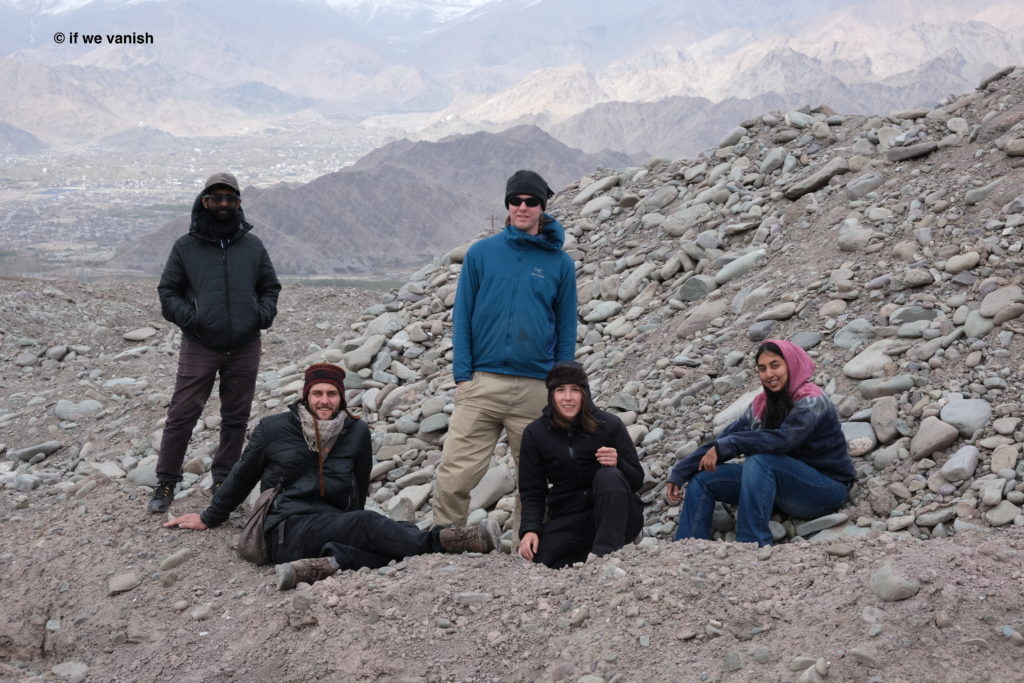
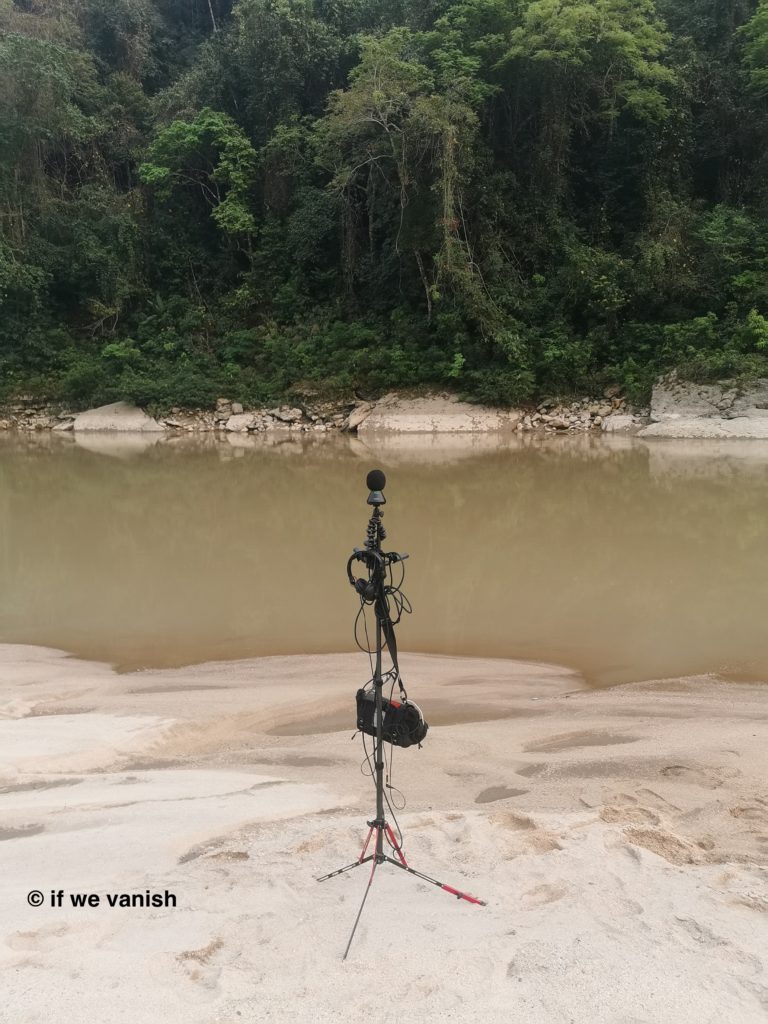
Before the echoes of the forests die, we may want to step back for a moment and listen carefully to the chorus of the natural world. The whisper of every leaf and creature pleads with us to love and care for the delicate tapestry of the biophony which, we now understand, was the first piece of music our species heard. This is the message that told us we are not separate but an essential part of a fragile biological community tied together not by hierarchies but by the celebration of life itself.
ABOUT THE AUTHOR
Nikhil Nagaraj is a sound designer, engineer, and musician, whose interest lies in the amalgamation of electronic and acoustic music. In 2014, he won the Mahindra Excellence in Theatre Award for his work as sound designer in the production “C Sharp C Blunt”. Since 2016, he has focused on gestural and algorithmic compositions in both his writings and research activities, while contributing to a few media labs and artist collectives worldwide. In 2018, he was the Goethe-Institut Artist-in-Residence at Wisp Kollektiv, Leipzig. In 2020, he won the Artistic Responses to Environmental Change grant supported by the Prince Claus Fund and the Internationaler Koproduktionsfonds supported by the Goethe-Institut. Apart from working as a sound designer and composer, Nikhil is also a founding member of ensembles such as “zLLLL” and 12 Hz Sound Laboratories, a centre for research and technology for immersive media in Bangalore. His compositions have been presented and performed numerous times in the last few years by touring Indian theatre and dance companies and featured in festivals such as Zürcher Theater Spektakel (CH), India Week (DE), Made in Hessen (DE), Serendipity Arts Festival (IN), Theatre On The Square (ZA), Secondo Festival (CH), India By The Bay (HK), Festival Quartiers Danses (CA). A glimpse of his work can be found at http://12hz.in/.
Photography and Videography: Xenia Gorodnia and Phil Jungschlaeger.

